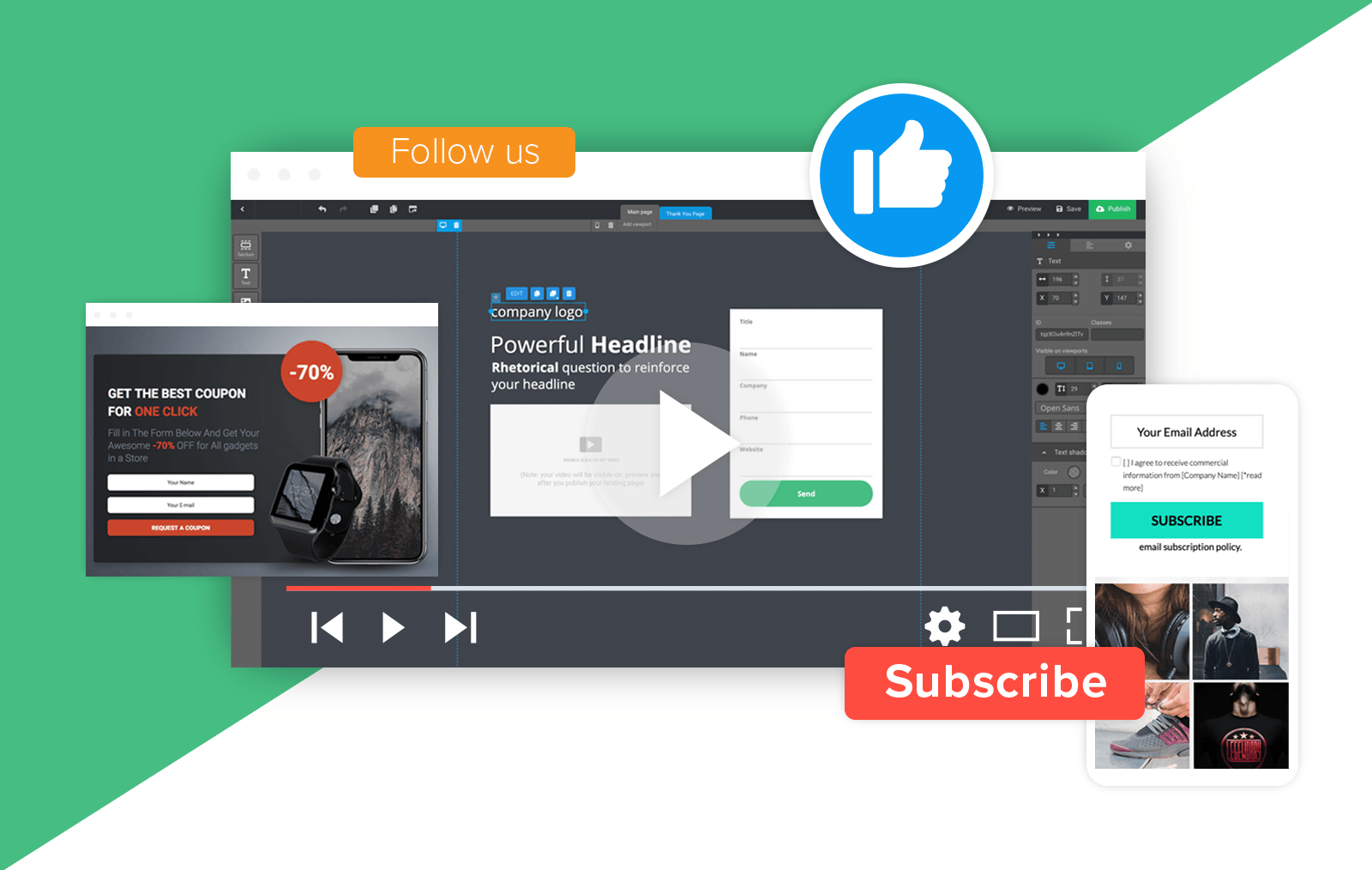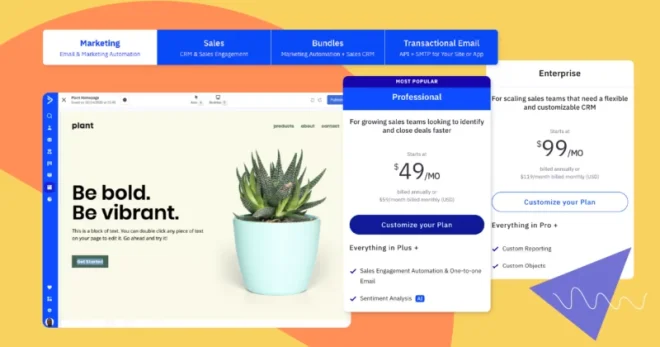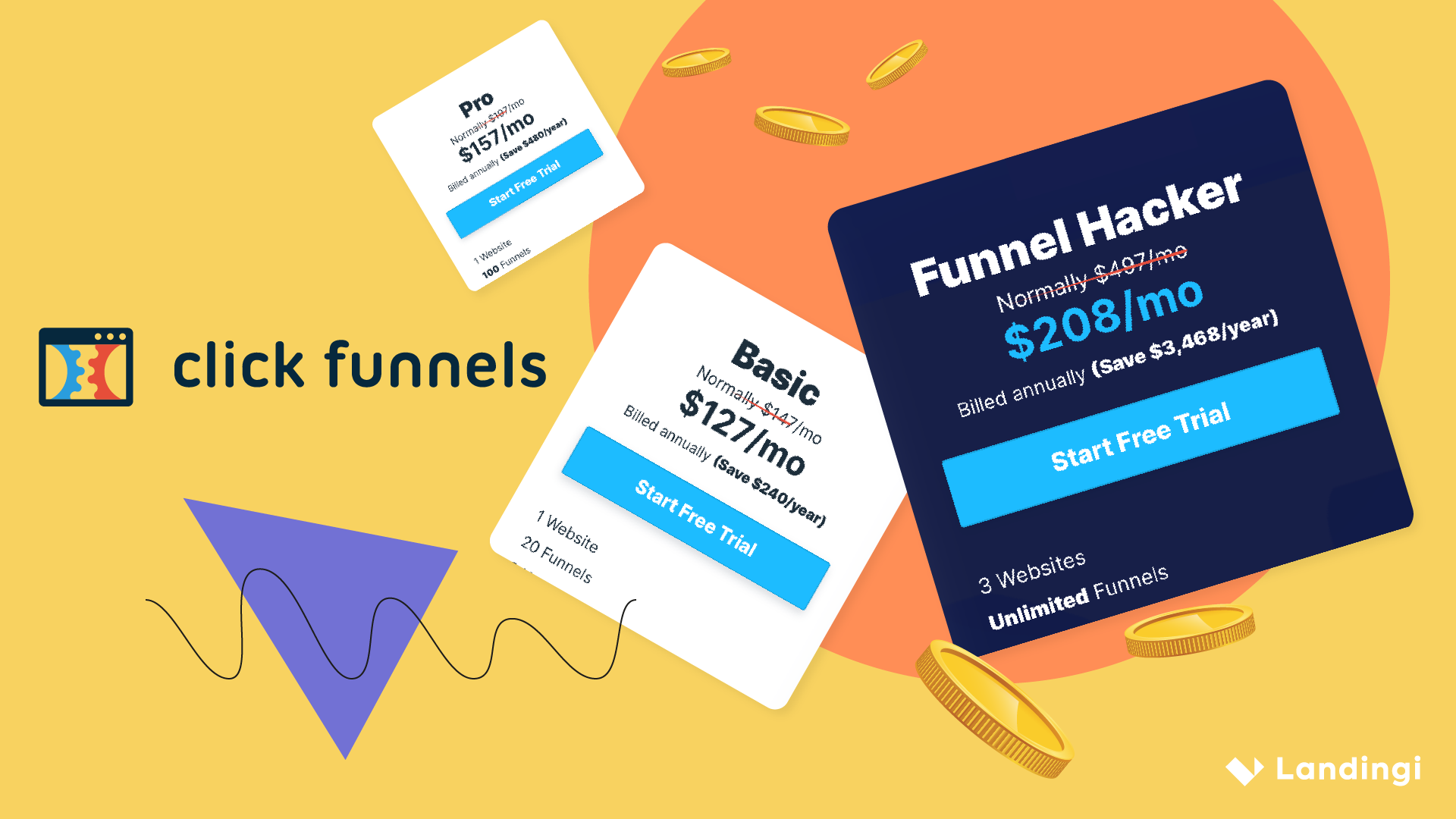Digital marketing is a highly evolving area. New trends, concepts and best practices appear here on a regular basis. Thus, you truly need to make an effort in order to keep up with all of this, and not to feel confused at the same time.
Inbound marketing turns out to be one of the most confusing marketing areas. It is frequently mistaken for content marketing. These both are heavyweight champions of marketing, but, in contrary to common sense, they are not the same thing.
Content marketing seems to be rather straightforward – it is about creating meaningful and engaging content for your target audience. What is inbound marketing, then?
What is inbound marketing?
Inbound marketing is a marketing strategy that attracts leads who are already looking for solutions similar to the ones you can provide them with. It is about delivering the right content to the right customers at the right time.
To be even more precise, the definition of inbound marketing states it is a business methodology attracting customers by using meaningful content and experiences tailored to their needs and preferences. It taps into appropriate processes and tools in order to form connections your customers are looking for, to resolve their problems and to delight them.
It proves to be efficient, because it allows you to build long-lasting and reliable relationships with your most prominent prospects.

Source: https://tinobusiness.com/inbound-marketing/
As you can see, inbound marketing entails all the phases of customer journey – namely, engagement, conversion, nurturing, delighting and in-depth analysis using proper tools.
How similar and different are inbound and content marketing?
As I have already mentioned, inbound and content marketing are frequently mistaken and even taken as the same concept. Although they have a lot in common, they shouldn’t be colluded.
Similarities
Both inbound and content marketing involve a holistic view of marketing aimed at satisfying visitors or customers needs. They both try to be non-interruptive and are based on building relationships with potential customers.
The similarities between these two concepts are:
- creating high quality content,
- aiming at attracting customers,
- defining target audience,
- defining every sales funnel phase,
- being directed towards ROI (return on investment).
Whether you base on content marketing ideas or the inbound ones, in both cases you need to create a lot of valuable content in order to achieve your marketing and business goals. Nevertheless, even though these both concepts get towards a common goal, they use different methods to achieve it.
Differences
First of all, content marketing is focused on creation and distribution of content using various channels (social media, blogs, landing pages) while inbound marketing is all about creating content appealing enough to impose an action from visitors (like purchasing, filling out a form, starting to follow on social media).
Although both inbound and content marketing aim at building relationships using content, in inbound marketing the efforts are strictly focused on the “bigger” picture. Its methods are targeted at inspiring leads to take an action. And content marketing is exclusively about delivering meaningful content.
What is more, content marketing is usually focused on limited areas of actions while inbound marketing ecompasses an enormous variety of methods.

Source: http://www.elsalvadorinternet.com/inbound-marketing-eng
Last but not least, inbound marketing entails primarily the methods adopted to convert visitors into customers when they come across your website or landing page. And content marketing is just a part of it, as it has a narrow span of ways.
What are the best inbound marketing examples?
Inbound marketing is a wide term and there is a broad area for action. See the examples below to discover how it can assist you in building long-lasting and trust-based relationships with your prospects.
Infographics
Studies show that “an infographic is 30 times more likely to be read than a purely textual article”. It makes infographics an extremely powerful and engaging tool that should be an element of every top-notch inbound marketing strategy.

Source: https://syni.co/here-are-the-benefits-of-infographics-and-why-they-dominate-the-content-game/
Infographics’ key feature is that they present meaningful information in a neat, ordered and appealing way. They not only increase engagement of your audience and readability of information, but also stick to mind easily – which improves your brand awareness.
Ebooks
Ebooks are a great opportunity to present your brand as an authoritative resource of valuable and useful information. They work great especially when they are free of charge and exchanged for contact information, because it allows you to easily capture new leads.
Blog posts
Running a company blog is one of the most obvious examples of inbound marketing. Numerous businesses create content that corresponds to the business’ mission, values and purpose. Articles on blogs are written to address the target audience’s needs and preferences, which makes them a great tool to educate or inform about new topics.
Webinars
Another great tool for inbound marketing purposes are webinars. They are extremely effective when it comes to educating the audience and keeping them engaged. With webinars you also have an amazing opportunity to prove your expertise and inspire trust among leads.

Source: https://medium.com/@ezTalks/key-benefits-of-different-webinar-types-62c4506faa60
Videos – sharing stories and video series
Internet users tend to be more responsive to videos than to written content. It is the reason behind the popularity that videos have been gaining for some time now. Videos are usually effective, engaging, valuable and easily shareable on Facebook, Instagram, Twitter or LinkedIn.
When it comes to videos, developing a video series turns out to be a great inbound marketing practice. It is an efficient way to educate your audience in an attractive way that keeps them engaged.
Visual marketing in social media
Visual marketing taps into images and graphics to convey promotional messages. Its key benefit is that when you accompany your stories with visuals, the users will be more likely to remember your message behind them – a great example of inbound marketing.
Instagram is fully-based on visual marketing, and the popularity of the platform is unstoppably on the upward trend. Nevertheless, visuals are also effective on other social media platforms. For example, “tweets with images receive 150 percent more retweets than those without them”.
Tweets with images receive 150 percent more retweets than those without them
CLICK TO TWEETThe focal point of visual marketing messages are pictures, graphics, videos or other visual aids, rather than traditional text-based marketing.
Case studies
The power of case studies is that they demonstrate hesitant users that your solution worked miracles for businesses similar to theirs.
If a visitor comes across a case study that tells a story of a company that acquired your product or service some time ago, and it turned out to be highly effective for the said company, the visitor is most likely going to think that it should work for them as well.
Emails
Email marketing has a high potential for increasing the size of your customer base and, in turn, your benefits. Sending a newsletter lets you update your community on:
- the content you have created,
- the products you have launched,
- the news about your business.
Moreover, a regular newsletter can assist you in making leads feel more connection to a brand.
You can also send email freebies to those who have agreed to receiving them, but they may not be as powerful as email newsletter deployment.
SEO optimization
Last but not least, SEO optimization turns out to be one of the most essential inbound marketing examples as it allows the previous ones to be even more effective.
SEO optimization is crucial in order for you to be easily found by those who are looking for your services. It makes your brand and the content you create more visible and omnipresent in the search engine results pages.
If you don’t take care of SEO, you will be missed out by dozens of prospects through organic search – no matter how engaging your videos are, or how much meaningful information your webinar delivers.
Why inbound marketing is important
The point of implementing inbound marketing in your digital marketing strategy is that it truly works. Adopting inbound marketing strategy towards potential customers enables you to capture leads, gain attention, increase productivity, and increase brand awareness.
Once you tap into the proposed inbound marketing examples, you will be able to build long-lasting and reliable relationships with prospects, which will bring fruit in increased conversions and revenue.
-cta3-






